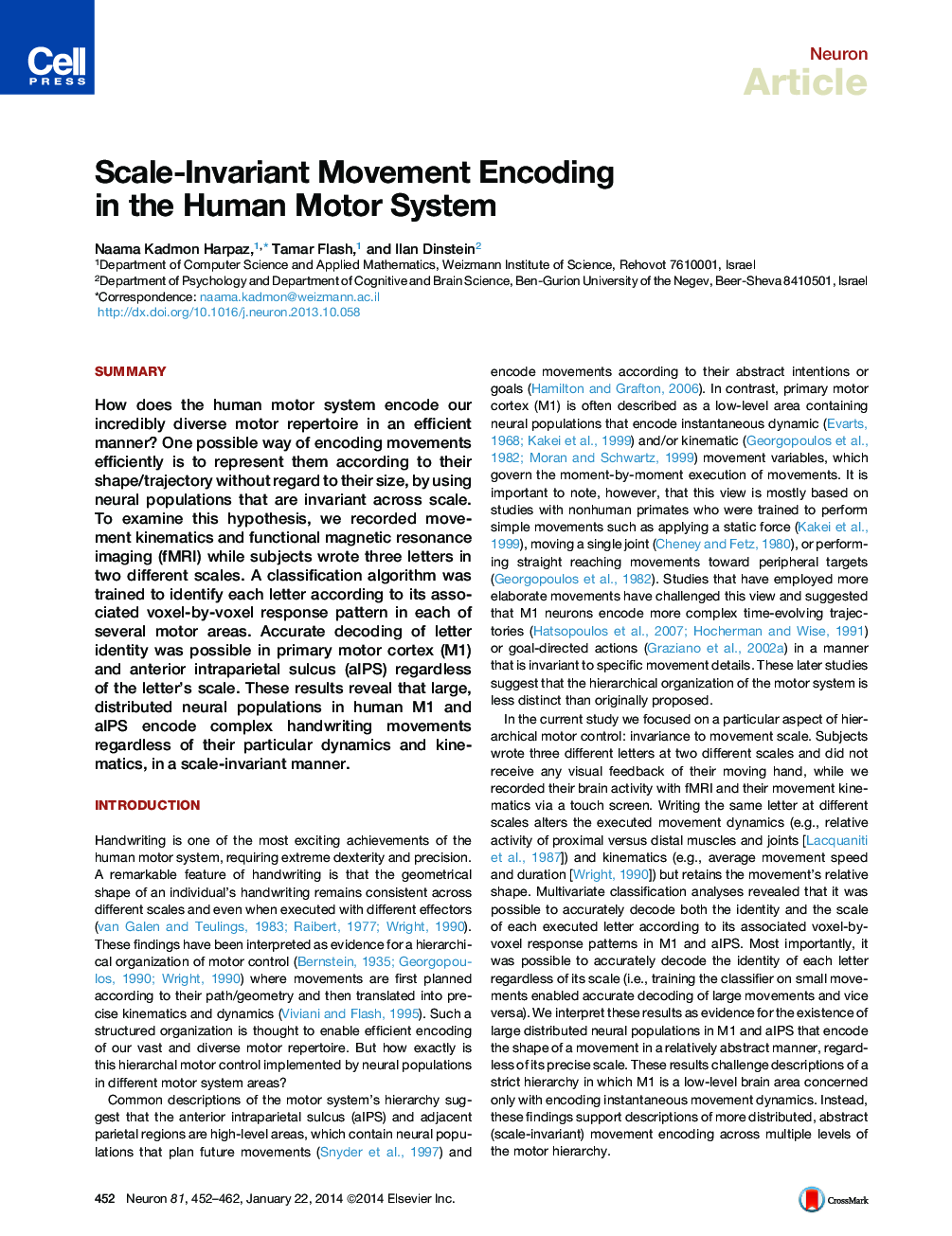| Article ID | Journal | Published Year | Pages | File Type |
|---|---|---|---|---|
| 4321207 | Neuron | 2014 | 11 Pages |
•Writing movements are encoded in a scale-invariant manner in M1 and aIPS•fMRI responses enabled decoding of letter size and identity in several motor areas•Response patterns in M1 and aIPS enabled decoding of letter regardless of size
SummaryHow does the human motor system encode our incredibly diverse motor repertoire in an efficient manner? One possible way of encoding movements efficiently is to represent them according to their shape/trajectory without regard to their size, by using neural populations that are invariant across scale. To examine this hypothesis, we recorded movement kinematics and functional magnetic resonance imaging (fMRI) while subjects wrote three letters in two different scales. A classification algorithm was trained to identify each letter according to its associated voxel-by-voxel response pattern in each of several motor areas. Accurate decoding of letter identity was possible in primary motor cortex (M1) and anterior intraparietal sulcus (aIPS) regardless of the letter’s scale. These results reveal that large, distributed neural populations in human M1 and aIPS encode complex handwriting movements regardless of their particular dynamics and kinematics, in a scale-invariant manner.
